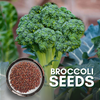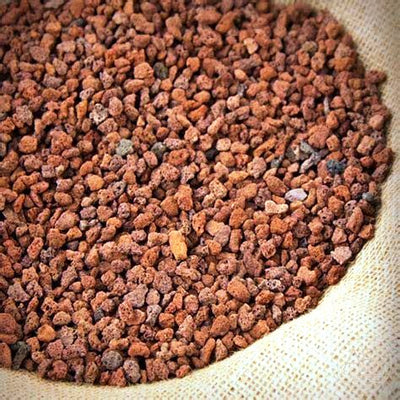
Green Paradise Croton Petra Plant:
Adding a Splash of Color to Your Indoors
About Croton Petra Plant
In the world of indoor plants, the Croton Petra stands out as a vibrant and visually captivating option for plant enthusiasts. With its striking foliage and unique patterns, this tropical gem has gained popularity as a go-to choice for adding a touch of nature's artistry to interior spaces. In this article, we will delve into the captivating world of the Croton Petra plant, exploring its origins, care requirements, and the aesthetic charm it brings to homes and offices.
A Kaleidoscope of Colors
- Known for its brilliant array of colors, the Croton Petra boasts leaves that appear to have been hand-painted by nature itself.
- Ranging from deep greens to vivid yellows, fiery oranges, and even rich reds, these leaves exhibit an intricate mosaic of hues.
- The variety of colors often depends on factors like light exposure, age of the leaves, and overall plant health.
- The contrasting colors on a single leaf create a mesmerizing visual impact, making the Croton Petra an instant conversation starter wherever it's placed.
Origin and Growth
- The Croton Petra (Codiaeum variegatum) is native to the tropical regions of Southeast Asia and the western Pacific.
- Its natural habitat gives us a clue about its preferred growing conditions – warm temperatures, high humidity, and bright, filtered light.
- In its native environment, the Croton Petra can grow into a large shrub or even a small tree, but when cultivated indoors, it's more commonly maintained as a compact houseplant.
Care Guide for the Croton Petra
While the Croton Petra's vibrant appearance might seem intimidating to care for, understanding its basic requirements can make the process enjoyable and rewarding.
Light:
Adequate light is crucial for vibrant foliage. Place your Croton Petra in a well-lit spot with bright, indirect sunlight. Direct sunlight can scorch the leaves, while too little light might result in faded colors and leggy growth.
Temperature and moisture:
This tropical factory thrives in warm and sticky conditions. Maintain a temperature range of 60-85°F (15-29°C) and consider using a humidity tray or regular misting to mimic its native environment.
Watering:
Keep the soil constantly wettish but not soppy. When the top inch of soil seems dry to the touch, water it. During downtime, reduce watering frequence as the factory's growth slows down.
Soil:
Use well-draining, high-quality potting mix to prevent waterlogging. A mix formulated for tropical plants works best.
Fertilization:
Feed your Croton Petra with a balanced liquid toxin every 2- 4 weeks during the growing season( spring and summer). Avoid fertilizing in the dormant downtime months.
Pruning:
Regularly trim the factory to maintain its shape and encourage bushier growth. You can also remove any dead or yellowing leaves to enhance its visual appeal.
Pest Control :
Keep an eye out for common inner factory pests like spider diminutives and mealybugs. Regularly inspect the leaves and stems and take appropriate action if infestations occur.
Mastering the Art of Cultivating Vibrant Croton Petra
Plants
The Croton Petra, scientifically known as Codiaeum variegatum' Petra', is a strikingly various and visually witching inner factory that has gained immense fashionability among factory suckers. Renowned for its diverse foliage hues and patterns, the Croton Petra adds a touch of tropical vibrancy to any living space. However, nurturing this magnificent plant requires a bit of knowledge and care. In this guide, we will explore the essential steps to successfully grow and maintain a thriving Croton Petra plant.
Selecting the Right Location
- Choosing the ideal location for your Croton Petra is crucial for its growth.
- These plants thrive in bright, indirect sunlight.
- Placing them near a south- or west-facing window where they receive filtered sunlight is ideal.
- Be cautious of direct exposure to intense sunlight as it can scorch the leaves.
- Inadequate light will lead to the loss of the plant's vibrant coloration, so finding the right balance is essential.
Providing Optimal Humidity
- Native to tropical regions, Croton Petra plants thrive in high humidity environments.
- To replicate their natural habitat, you can increase humidity around the plant.
- Mist the leaves regularly or place a charger with water and pebbles near the Plant.
- A humidifier can also be a valuable addition, especially in drier climates or during the winter months when indoor air tends to be dry.
Watering Techniques
- Croton Petra plants prefer consistently moist soil but dislike soggy conditions.
- Water only until the top inch of soil is completely dry.
- When watering, ensure that the pot has proper drainage to prevent root rot.
- Water the plant thoroughly, allowing excess water to escape through the drainage holes.
- During the winter, reduce the frequency of watering as the plant's growth slows down.
Suitable Potting Medium
- Using well-draining potting soil is essential for Croton Petra plants.
- A mix formulated for tropical plants with good aeration and drainage works best.
- You can also add perlite or beach to ameliorate drainage.
- Repot the plant every 2-3 years, preferably during the growing season in spring, if you notice it becoming root-bound.
Fertilizing Routine
- Croton Petra plants benefit from regular feeding during the growing season (spring and summer).
- Use a balanced liquid toxin adulterated to half strength every 4- 6 weeks.
- Avoid fertilizing during the winter months, as the plant's growth slows down and it requires fewer nutrients.
Pruning for Shape and Health
- Pruning not only helps maintain the Croton Petra's desired shape but also promotes air circulation and prevents overcrowding.
- Remove any dead, damaged, or yellowing leaves promptly to encourage new growth.
- Wear gloves while pruning as the plant's sap can be irritating to the skin.
Pest Management
- Keep an eye out for common indoor plant pests such as mealybugs, spider mites, and aphids.
- Check the leaves and stems for symptoms of infestation on a regular basis.
- If pests are detected, isolate the plant and treat it with insecticidal soap or neem oil, following the manufacturer's instructions.
Conclusion
The Croton Petra plant is a testament to the beauty and diversity that nature offers. Its kaleidoscope of colors, unique patterns, and relatively manageable care requirements make it a sought-after addition to indoor plant collections. By providing the right conditions of light, temperature, humidity, and care, you can enjoy the vibrant charm of the Croton Petra as it brings a touch of the tropics into your living spaces. So, if you're ready to elevate your indoor gardening game, consider welcoming a Croton Petra into your home and experience the joy of nurturing this living work of art.


















